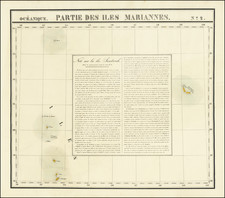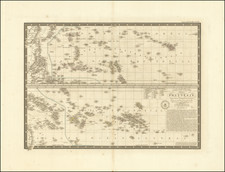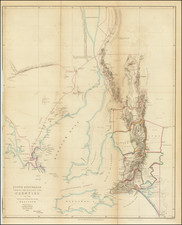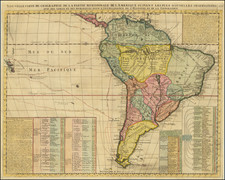Good example of the map illustrating the route of Wilhem Schouten though the Straits of Le Maire and across the Pacific to the area northeast of Australia in 1619, from Volume XI of De Bry's Grand Voyages.
This work is translated from Willem Corneliszoon Schouten, Journal ofte beschryvinghe van de wonderlicke reyse, Frankfurt a. M., 1619. The appendix is translated from Joris van Spilbergen, Oost en West-Indische spiegel, Leiden, 1619.
Willem Cornelisz Schouten (1567-1625) was a navigator for the Dutch East India Company. He was the first to sail the Cape Horn route to the Pacific Ocean.
In 1615, Willem Cornelisz Schouten and Jacob le Maire sailed from Texel in the Netherlands, in command of an expedition sponsored by Isaac Le Maire and his Australische Compagnie in equal shares with Schouten. One of the reasons for the voyage was to search for Terra Australis, which eluded them. A further objective was to evade the trade restrictions of the Dutch East India Company (VOC) by finding a new route to the Pacific and the Spice Islands. In 1616, Schouten rounded Cape Horn, which he named for his birthplace, the Dutch city of Hoorn. He followed the north coasts of New Ireland and New Guinea and visited adjacent islands, including what became known as the Schouten Islands.
Although Schouten opened an unknown route, the VOC claimed infringement of its monopoly of trade to the Spice Islands. Schouten was arrested (and later released) and his ship confiscated in Java. On his return he would sail again for the VOC, and on one of these trips he died off the coast of Madagascar in 1625.
Theodor de Bry (1528-1598) was a prominent Flemish engraver and publisher best known for his engravings of the New World. Born in Liege, de Bry hailed from the portion of Flanders then controlled by Spain. The de Brys were a family of jewelers and engravers, and young Theodor was trained in those artisanal trades.
As a Lutheran, however, his life and livelihood were threatened when the Spanish Inquisition cracked down on non-Catholics. De Bry was banished and his goods seized in 1570. He fled to Strasbourg, where he studied under the Huguenot engraver Etienne Delaune. He also traveled to Antwerp, London, and Frankfurt, where he settled with his family.
In 1590, de Bry began to publish his Les Grands Voyages, which would eventually stretch to thirty volumes released by de Bry and his two sons. The volumes contained not only important engraved images of the New World, the first many had seen of the geographic novelties, but also several important maps. He also published a collection focused on India Orientalis. Les Grands Voyages was published in German, Latin, French, and English, extending de Bry’s fame and his view of the New World.












![[Australia] Ins kleine Gebrachte Karte von den Sud-Laendern Zur Historie der Reisen](https://storage.googleapis.com/raremaps/img/small/93880.jpg)

